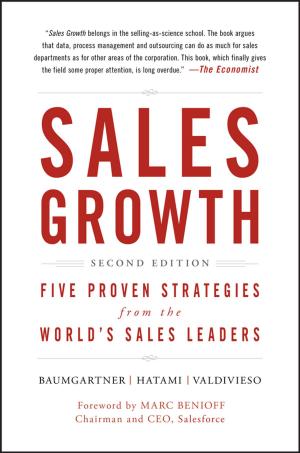Mindful Management
The Neuroscience of Trust and Effective Worplace Leadership
Business & Finance, Human Resources & Personnel Management, Organizational Behavior, Management & Leadership, Leadership| Author: | Dalton Kehoe | ISBN: | 9781988303048 |
| Publisher: | Communicate For Life, Ltd. | Publication: | April 20, 2016 |
| Imprint: | Second Edition | Language: | English |
| Author: | Dalton Kehoe |
| ISBN: | 9781988303048 |
| Publisher: | Communicate For Life, Ltd. |
| Publication: | April 20, 2016 |
| Imprint: | Second Edition |
| Language: | English |
This book is about the power of our rational and emotional minds in our work lives. It demonstrates the essential interconnection between them for motivating us to work and for making us effective leaders. Using the metaphor of the Rider for the rational mind and the Elephant for our emotional mind, the reader instantly sees the differences between them in size and power. They serve different but interconnected functions and when they are positively aligned our work engagement and productivity improves dramatically.
This alignment happens when our Elephant mind “reads” our situation as one where its deep neural needs for certainty, compliments, choice and consideration from others are fulfilled. This supports our Rider or rational mind (the home of our thoughts, speech and sense of self) because it is driven to know that we are of value, have some influence and can demonstrate competence in every situation. When managers communicate this, employees’ Elephant minds flood their Riders with the emotion of motivation. They energize employees’ conscious commitment to achieve. Moreover, when Elephants read persistent, positive emotional connections with others, they learn to trust them and trust is the basis for full engagement in our work.
This book shows managers how to “wake up” and change the way they communicate to re-engage their employees. It provides simple but powerful techniques for becoming mindful and for building productive trust.
It also shows leaders how to manage their minds to: (1) make more powerful decisions, (2) ask others to change and actually get it to happen, and, (3) organize change programs in the workplace that really change things. Mindful Management makes it clear: to lead people, first manage your own minds then engage others’ minds to build trust. This book shows you how.
This book is about the power of our rational and emotional minds in our work lives. It demonstrates the essential interconnection between them for motivating us to work and for making us effective leaders. Using the metaphor of the Rider for the rational mind and the Elephant for our emotional mind, the reader instantly sees the differences between them in size and power. They serve different but interconnected functions and when they are positively aligned our work engagement and productivity improves dramatically.
This alignment happens when our Elephant mind “reads” our situation as one where its deep neural needs for certainty, compliments, choice and consideration from others are fulfilled. This supports our Rider or rational mind (the home of our thoughts, speech and sense of self) because it is driven to know that we are of value, have some influence and can demonstrate competence in every situation. When managers communicate this, employees’ Elephant minds flood their Riders with the emotion of motivation. They energize employees’ conscious commitment to achieve. Moreover, when Elephants read persistent, positive emotional connections with others, they learn to trust them and trust is the basis for full engagement in our work.
This book shows managers how to “wake up” and change the way they communicate to re-engage their employees. It provides simple but powerful techniques for becoming mindful and for building productive trust.
It also shows leaders how to manage their minds to: (1) make more powerful decisions, (2) ask others to change and actually get it to happen, and, (3) organize change programs in the workplace that really change things. Mindful Management makes it clear: to lead people, first manage your own minds then engage others’ minds to build trust. This book shows you how.















